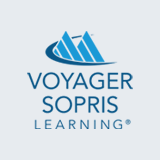For Improved Literacy Performance—Teach to the Rigor, Not to the Test
What does it mean to “teach to the test,” and how is it different from “teaching to the rigor?” Many schools and districts give students round after round of reading and writing items that mimic the questions they will see on their state’s high-stakes assessment. Some educators believe practice makes perfect and, hence, more practice is better than less in increasing students’ odds for higher test scores.
This is what we mean by “teaching to the test”—repeated practice on test-like items and, unfortunately, it does not have the impact on performance we wish it might. But if we don’t provide look-alike test items for practice, what can we do to prepare our students for new standards-based assessments that now test a greater range of standards, at greater depth?
We can teach to the rigor. I define rigor as the expectations set for our students. We know that on new assessments, students will now be expected to address standards not only about what an author is saying, but how an author delivers her message. We know there will be expectations for making connections between texts, and writing to sources. Furthermore, we know students will be expected to demonstrate knowledge at multiple Depths of Knowledge.
To prepare students to meet these challenges we do need assessment items. But we need to use them differently from the way we have used them in the past—not as models for practice, but for clues to the kinds of instruction we should provide. Here is an example of an assessment item that might appear on a middle school standards-based English Language Arts test:
What does the use of dialogue show about the relationship between [Character A] and [Character B]? Select three options.
- The dialogue shows that [Character A] and [Character B] are just getting acquainted.
- The dialogue signifies they despise each other at first.
- The dialogue indicates they have different opinions about progress in their small town.
- The dialogue demonstrates they resolve their differences.
- The dialogue tells the reader that one character is antagonistic, and the other is not.
- The dialogue helps the reader visualize the conversation between the two characters.
We should examine this item (and all items) for several factors:
- What standard is the item assessing? Based on Common Core coding, this item is measuring RL3, which focuses on text elements in literature such as story parts and real-world events—with particular emphasis on the relationship between these elements. It’s helpful to see specific ways a standard is converted into a test question because we can’t always imagine this accurately in our mind.
- What is the Depth of Knowledge the item expects? This question assesses Depth of Knowledge 3, strategic thinking and reasoning. In other words, this is an inferential question. The answer is not on the page, but will emerge as students think about the implications of what the author has written. Some test questions require only basic textual knowledge. But more and more, new assessments will measure deeper understanding. A test item can clarify what this rigor looks like. We especially need to take note of how DOK 3 and 4 will be measured.
- Academic language: In this one item, there are many words students need to comprehend to answer well: dialogue, relationship, signifies, despise, antagonistic. If we are not aware that some students may find these words difficult, we will not be measuring reading comprehension at all, just confusion about what the question is asking. We need to study the academic language of questions so we can build students’ repertoire of test-taking vocabulary.
- The skills and concepts students need: For this item, students need to understand character relationships and the role of dialogue in a story. While we focus a great deal on character traits and feelings, how much time do we spend building an understanding of the different ways characters can relate to each other? Similarly, how substantially do we address the various roles dialogue can play in enhancing an author’s message? When we examine test items for instructional needs, we sometimes discover gaps in our teaching that need filling.
- The instruction students need: For this item, we have identified what to teach; now the question becomes how do we teach it—in this case, the concept of character relationships and the role of dialogue. What resources would meet our students’ needs? What strategies could we employ to make the learning easier? I might select the short story “Thank You, Ma’am” by Langston Hughes because of its focus on the relationship between the boy and the woman, and the way Hughes developed this relationship through dialogue. Of course, many other sources could work, too. For strategies, I might develop two anchor charts with students, one identifying different ways characters can relate to each other, and a second chart noting ways dialogue can support a text.
New era “test prep” is not really test prep at all; it is great teaching.
It is recognizing the rigor of student expectations, whether in literacy or another area of the curriculum, and ensuring we have armed students with the tools to meet these challenges. Yes, we do need assessment items to achieve this goal—not so we can offer endless worksheets with questions about author’s purpose, text structure, character relationships, and more, but to provide robust learning opportunities that maximize students’ capacity to relate knowledgeably to their world.


